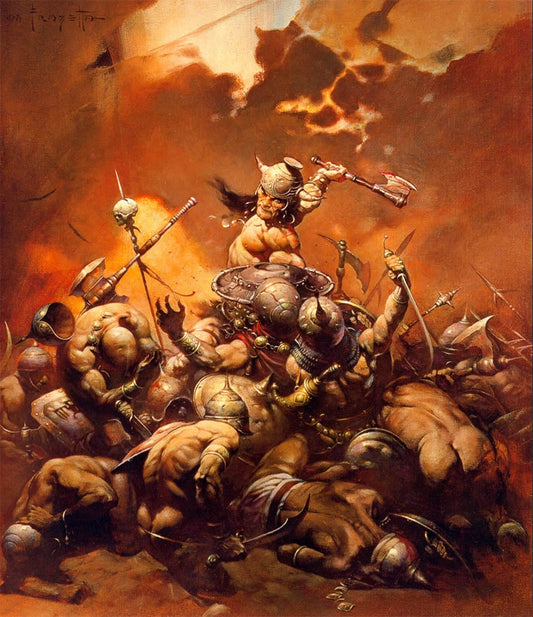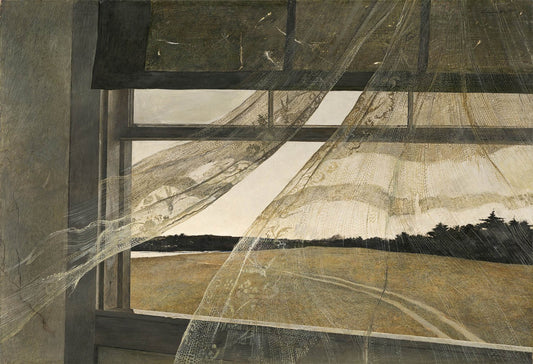Important Things Have Names: Why You Should Title Your Artworks
Andreas ClaußenShare
You know, it's funny how some ideas just cling to your brain like lint to a black sweater. Unfortunately, I can't remember where I picked up this gem, but it's one of those thoughts that immediately burned into my head: Important things have names. And once that thought is in your head, you start seeing it everywhere, like the universe just decided to play along with your little epiphany.

Think about it. We humans are so special that we get not just one name, but often two or three, plus nicknames and profile names—I'm looking at you, @astronaut_dude123. Animals, plants, buildings, technology—they all get names too. And science? Oh, science loves naming things. Every little particle, and every tiny quark, gets its own special designation.
Why? Because naming things makes them real. It lets us distinguish one thing from another, talk about them, remember them, and even know they exist. It's like a cosmic roll call, where if you don't have a name, you might as well be invisible.

The Importance of Names in Learning
Take anatomy, for instance. When you're learning about the human body, you can't just say "that muscle" or "this bone." You need to know the names of the individual muscles and bones. Otherwise, they remain this undefined mush in your brain, quickly forgotten. It's like trying to navigate a new city without a map—good luck remembering where anything is.

Names as Descriptors
Names are sticky notes on the world's corkboard. They help us remember, and sometimes, they even tell us something about the thing they're naming. The meaning of a name can often reveal features and characteristics of the named. Like "Thunderstorm"—you know it's not just a little drizzle you're dealing with. Or "Butterfly," which sounds so much more enchanting than "insect with colorful wings."

Personal Naming Tricks
And here's a little trick for when it's just you and your thoughts: give your own names to things. It's not just for fun (although it is fun). It helps you remember. It's like calling your favorite cozy chair "the Think Tank"—suddenly, it's not just a chair. It's a place where ideas are born.

Cultural Naming Nuances
There's this saying that Eskimos have 50 words for snow. Why? Because snow is important to them. When something matters, we break it down into its nuances, we give it names. So, when we name things, we're really saying, "Hey, you matter. You're important enough to be singled out and talked about."

Naming My Artworks
I remember when I started to care about naming my paintings. I went from naming all paintings “Seascape + Date of Completion” to finding an individual name for each piece that extends or twists the meaning of the work. Names became an important characteristic of my FLOOD series. It is like giving the works an identity, a personality. "Be Prepared," "Take What You Need," "Don't Believe Everything You See on TV"—these aren't just titles. They're messages, little capsules of thought that add another layer to the visual experience.
The Connection Through Names
It's not just about identification; it's about connection. When you name something, you form a bond with it. It's like naming a pet. Suddenly, it's not just "the dog." It's "Max," your faithful friend who greets you with a wagging tail every day.

The Humor in Naming
And let’s not forget the humor in all this. Sometimes, you have to laugh at the absurdity of it all. I should give the inflatable pool flamingo in my FLOOD series a name—"Bob" or so. Because it's not just a pool toy. It's a survivor, a character in my post-apocalyptic narrative, bobbing along in the flooded remnants of Earth.

The Transformative Power of Names
So, the next time you come across something new, give it a name. Make it real. Make it memorable. Whether it’s a new gadget, a project, or even a fleeting thought. Name it, and watch how it transforms from a vague idea into something concrete and meaningful. After all, in a world that's constantly shifting and changing, names are the anchors that keep us grounded. And sometimes, they're just good for a laugh.



